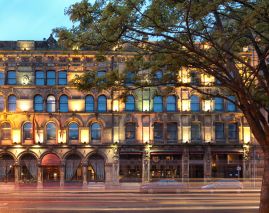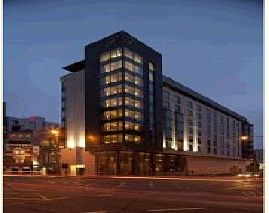Capital of Northern Ireland
Belfast is the capital city and the largest city in Northern Island. It is the 14th largest city in the UK and second only to Dublin in both North and the Republic of Ireland. The city suffered greatly during the period of conflict known as The Troubles but is now a peaceful region and has benefited from recent economic and commercial growth. The conflict, which has now passed, was between Catholics and Protestants often termed locally as Republicans and Loyalists and lasted from as early as 1970 until 2001. Belfast has a population of nearly 500,000 residents.
Banks dominate the architecture
The architecture in Belfast is varied and combines old and new. Some of the buildings date back to Edwardian times and a fine example of this includes Belfast City Hall in the town centre, the Lanyon Building, which is part of Queen’s University and Linehall Library located in Donegall Square North.
Two of the most impressive buildings in the city include Ulster Bank in Waring Street and Northern Bank in Donegall Street both of which date back to the early 1800s. Alternatively head to the Cathedral Quarter to see some of the oldest buildings in Belfast but also witness the emergence of modern buildings as the entire City undergoes redevelopment. One of the most modern being Winsor House which is a sky scraper at 23 floors but already it is due to be eclipsed once the erection of the new Aurora Tower at 37 storeys is completed.
Belfast has more than 40 parks but one of the finest is the Botanic Gardens in the Queens Quarter, which was built in the 1800s and still hosts some of the earliest examples of cast iron and curving glasshouses.
The Titanic experience
One of the most recently visited venues in Belfast is the fantastic Titanic Belfast which is located in the Titanic Quarter and is centred around the world-famous ship’s construction through to her launch in the 1900s and her fateful maiden voyage. The venue describes and illustrates a vibrant Belfast town and demonstration of the successful shipyards where the vessel was constructed through to the tragic end and footage of the wreck where it lies on the floor bed of the North Atlantic.






































